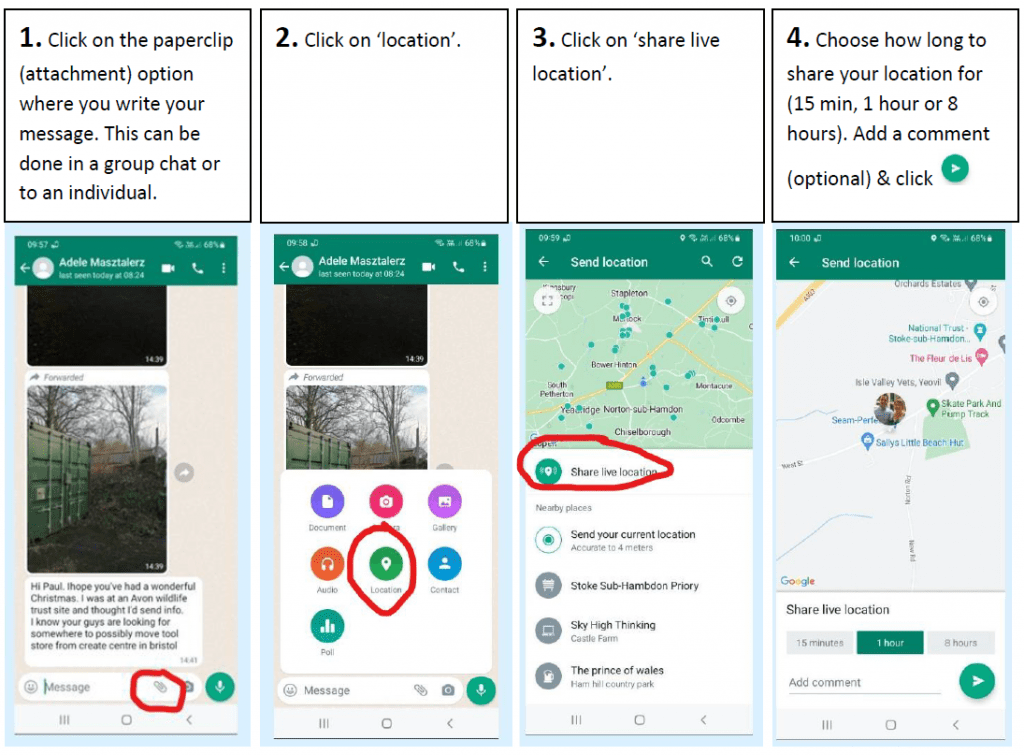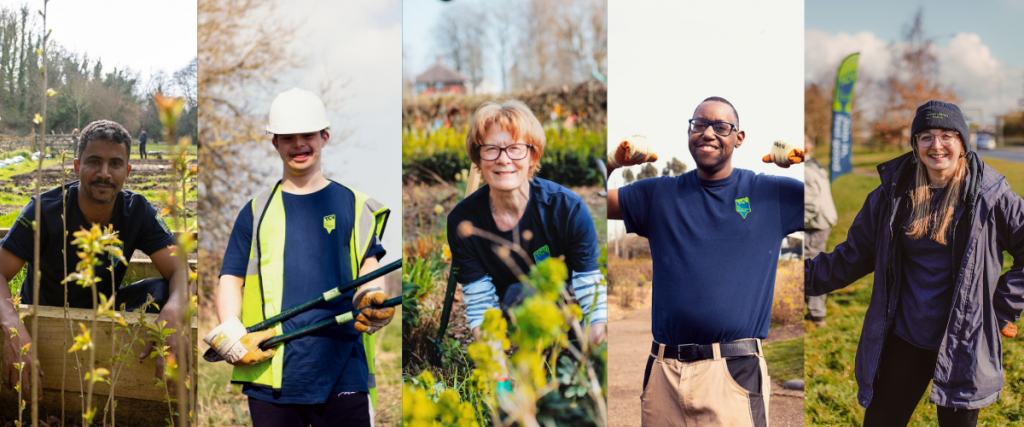Written by Paul Sherriff, TCV Health & Safety Manager.
Our winter can be unpredictable. Bad weather can strike suddenly. So, when severe weather hits, it’s best to stay off the road. If you must drive, make sure you are prepared for the conditions. Read on to find out how.
TCV’s Community Network supports hundreds of groups across the UK who are passionate about protecting their local environment or who wish to create new green spaces to reflect their community’s unique needs.
Firstly, ask yourself – is your journey essential? If it is, check the local and national weather forecasts for travel formation. The Highways Agency website may help for current traffic and road conditions. Make sure you tell someone at your destination what time you expect to arrive. If you find yourself driving in poor conditions here’s a reminder of some good tips & techniques:
Snow and Ice
• It can take up to 10 times longer to stop on icy roads. Increase the gap between your vehicle and those in front to allow more room to slow down and brake.
• Hail, heavy snow, and rain reduce visibility so use dipped headlights and reduce your speed.
• Drive slowly, allowing extra time for braking and avoid sharp turns, or sudden increases in speed.
• To avoid skidding when braking use a low gear early, let your speed reduce gradually and brake gently.
• If you start to skid, take your foot off the accelerator. Do not brake suddenly.
• Black ice is an invisible threat. Be aware when driving round sheltered bends or corners shaded from the sun, as this is where black ice is most likely to be. A sign that you are on black ice is a sudden loss of tyre noise. Do not brake or make any sudden steering movements. Ease off the accelerator and proceed slowly and smoothly.
Fog
• Drive slowly and use dipped headlights so that other vehicles can see you.
• Use fog lights if visibility is seriously reduced but switch them off when visibility improves.
• Avoid driving close behind a vehicle to follow their rear lights, this gives a false sense of security.
Rain
• It can take up to twice as long to stop when roads are wet.
• Keep back from the vehicle in front. This improves visibility and gives you time to think and react.
• Driving fast over surface water can cause your tyres to lose their grip, known as ‘aquaplaning’. If this happens, take your foot off the accelerator and slow down. Do not brake hard.
Flooding
• Don’t try to cross floods if the water seems too deep – if water gets into the engine via the exhaust pipe it may fail and cause irreparable damage. If you must go through a flood, drive slowly in first gear to avoid stalling the engine. Keep the engine revs high and slip the clutch if necessary.
• Avoid the deepest water, which is usually near the kerb.
• Once you’ve gone through a flood, test your brakes. Continue only if the brakes are fine.
Winter Sun
• Dazzle from low winter sun can be dangerous so make sure that your windscreen is clean.
• Wear sunglasses if they help.
If you get into trouble
• Plan for emergency and always travel with an emergency kit containing items including a high visibility vest or jacket, hat and gloves, torch, and any other items you may need in an emergency.
• Don’t use a mobile when driving even hands free. Pull over and stop somewhere safe or ask someone with you to make the call.
• On a motorway, use the emergency telephones on the roadside as this makes it easier for the emergency services to locate you. If you use a mobile, check the marker posts on the side of the road for exact location.
• Stay with your vehicle until help arrives as leaving it may mean it obstructs snow ploughs, ambulances etc.
• Put on your warmest clothes, keep having drinks, but don’t drink alcohol as this reduces your body temperature.
• If you must leave your vehicle to get help, make sure other drivers can see you and tell other people where you are going.
Knocks & Scrapes
We have seen a rise in minor vehicle incidents this year so far. You can see from the graph that there are some themes emerging. Most of these incidents are hitting stationary objects such as parked vehicles, bollards or gate posts etc. These types of incidents are often caused by the following:
• Rushing – feeling pressure and not taking time to do all the safety checks.
• Lack of experience in larger vehicles. Many of us have only driven small hatchbacks or similar. Driving a larger vehicle requires changing our technique to avoid incidents.
• Driver assistance such as reversing alarms alarms can cause us to neglect our skills at observing and judgement.
• Poor visibility. Some of our vehicles have larger blind spots to the side or obstructed rear view. This means manoeuvring them becomes more challenging.
Please remember that practice makes perfect. If you’re not used to driving a larger vehicle then practicing is important, preferably with someone who is more experienced. You could use FM-D03 Driver Assessment to cover the basics (ignoring the bits that aren’t relevant). Go to an empty carpark or quiet industrial estate or equivalent, where you can turn at a junction, reverse, and park into spaces. Get out and see how accurate you have been. Learn how to judge the size and manoeuvrability of the vehicle. This is particularly important when turning. Larger vehicles require drivers to take bends at a wider angle by turning a bit later round the bend than in a small car.
Consider buying and installing blind spot mirrors if your vehicle doesn’t have one fitted.
Try to avoid the need to reverse by parking further away from shop entrances but where you can drive forwards into a space and forwards out.
If you need to reverse, get out and see how much space you have before reversing. Have a look around the vehicle as the front end can hit obstacles when reversing round a corner. You could use a banks person to direct you, but this can be dangerous and needs careful planning and risk assessing. A banks person should be trustworthy and responsible. They need to wear a high visibility top, stay well clear of the vehicle, and ensure they always remain in view of the driver either in a mirror, or by standing off to the side and maintaining eye contact with the driver. The
banks person should also agree hand gestures and signals with the driver before manoeuvring begins and the driver should carry out the manoeuvre very slowly.
Sharing your location via WhatsApp
Sharing your location with a colleague or loved one can be a safety measure when working alone. For those of you who use WhatsApp there is a clever way of doing this via a message. This can be done in 4 simple steps, here’s how:

If you have never used WhatsApp and now think you might want to then check out these two websites to understand more:
https://www.digitaltrends.com/mobile/how-to-use-whatsapp/
https://www.ageuk.org.uk/information-advice/work-learning/technology-internet/whatsapp/#skip
The Conservation Volunteers believes that every community in the country should have access to high quality local green spaces – safe, welcoming, and loved by their communities – homes to thriving nature and thriving people.
TCV are committed to supporting a community network of groups and organisations who share that vision.
________________________________

Keep up to date with the latest news and activities from The Conservation Volunteers by following us on Twitter, Facebook, LinkedIn and Instagram. You can also sign up to receive our Greenzine newsletter for more ways to get involved.

